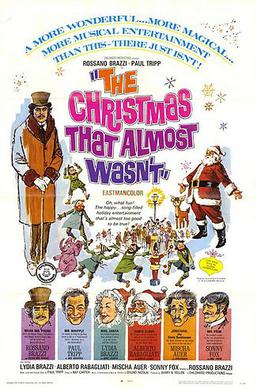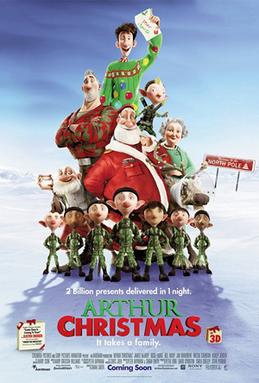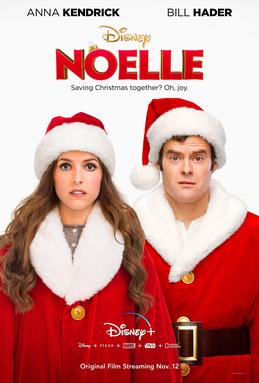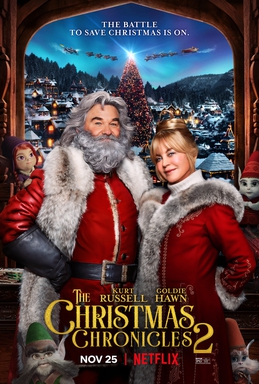
Superman is a 1978 superhero film based on the DC Comics superhero Superman, played by Christopher Reeve. It is the first of four installments in the Superman film series starring Reeve as Superman. The film was directed by Richard Donner based on a screenplay by Mario Puzo, David Newman, Leslie Newman, and Robert Benton. In addition to Reeve, the film features an ensemble cast including Marlon Brando, Gene Hackman, Jeff East, Margot Kidder, Glenn Ford, Phyllis Thaxter, Jackie Cooper, Trevor Howard, Marc McClure, Terence Stamp, Valerie Perrine, Ned Beatty, Jack O'Halloran, Maria Schell, and Sarah Douglas. It depicts the origin of Superman, including his infancy as Kal-El of Krypton, son of Jor-El (Brando), and his youthful years in the rural town of Smallville. Disguised as reporter Clark Kent, he adopts a mild-mannered disposition in Metropolis and develops a romance with Lois Lane (Kidder) while battling the villainous Lex Luthor (Hackman).

Elf is a 2003 American Christmas comedy film directed by Jon Favreau and written by David Berenbaum. It stars Will Ferrell as Buddy, a human raised by Santa's elves, who learns about his origins and heads to New York City to meet his biological father. James Caan, Zooey Deschanel, Mary Steenburgen, Ed Asner and Bob Newhart appear in supporting roles.

The Santa Clause 2 is a 2002 American Christmas comedy film directed by Michael Lembeck in his directorial debut. It is a sequel to The Santa Clause (1994) and the second installment in The Santa Clause franchise. All of the principal actors from the first film, including Tim Allen, Eric Lloyd, Judge Reinhold, Wendy Crewson, and David Krumholtz, reprise their roles, and are joined by Elizabeth Mitchell, Spencer Breslin, and Liliana Mumy.
Leslie Bricusse OBE was a British composer, lyricist, and playwright who worked on theatre musicals and wrote theme music for films. He was best known for writing the music and lyrics for the films Doctor Dolittle; Goodbye, Mr. Chips; Scrooge; Willy Wonka & the Chocolate Factory; Tom and Jerry: The Movie; the titular James Bond film songs "Goldfinger" and "You Only Live Twice"; "Can You Read My Mind? " from Superman; and "Le Jazz Hot!" from Victor/Victoria.

Supergirl is a 1984 superhero film directed by Jeannot Szwarc from a screenplay by David Odell based on the DC Comics character of the same name. It is the fourth film in the Superman film series, set after the events of Superman III (1983) and serving as a spin-off of the series. The film stars Helen Slater as Supergirl, along with Faye Dunaway, Hart Bochner, Peter Cook, Mia Farrow, Brenda Vaccaro, and Peter O'Toole, with Marc McClure reprising his role as Jimmy Olsen from the Superman films.

Elf Bowling is a bowling video game developed by NStorm and released in 1998 for Windows Computers. In the game the player, as Santa Claus, attempts to knock down elves who are arranged like bowling pins. A later release of the game, by Ignition Entertainment, was released on the Nintendo handheld consoles Nintendo DS and Game Boy Advance, and received overwhelmingly negative reviews from critics. In Elf Bowling, the elves of Santa's Workshop are on strike due to overwork from the huge demand for Christmas toys, so Santa Claus has decided to whip them into shape by using them as bowling pins.
Alexander Salkind was a Polish born-French film producer, the second of three generations of successful international producers.
Ilya Juan Salkind Domínguez, usually known as Ilya Salkind, is a Mexican film and television producer, known for his contributions to three of the four live-action Superman films of the 1970s and 1980s alongside his father, Alexander Salkind.

The Santa Clause 3: The Escape Clause is a 2006 American Christmas comedy film directed by Michael Lembeck. It is the third installment in The Santa Clause franchise, following The Santa Clause (1994) and The Santa Clause 2 (2002). The film features Tim Allen returning as Scott Calvin, who must find a way to reverse a spell cast by Jack Frost that caused him to lose his title of Santa Claus. Allen and Short had previously worked together in the 1997 Disney comedy film, Jungle 2 Jungle. Most of the supporting actors from the first two films reprise their roles, with the exception of David Krumholtz. As a result of his absence, Curtis, who was previously the Assistant Head Elf, has now been promoted to Bernard's former position. This was Peter Boyle's final film to be released during his lifetime. Its production was completed in February 2006.

Santa vs. the Snowman is a 1997 American animated Christmas comedy television special created by Steve Oedekerk and produced by O Entertainment. It originally aired on ABC on December 12, 1997, following The Online Adventures of Ozzie the Elf.

Motion pictures featuring Santa Claus constitute their own subgenre of the Christmas film genre. Early films of Santa revolve around similar simple plots of Santa's Christmas Eve visit to children. In 1897, in a short film called Santa Claus Filling Stockings, Santa Claus is simply filling stockings from his pack of toys. Another film called Santa Claus and the Children was made in 1898. A year later, a film directed by George Albert Smith titled Santa Claus was created. In this picture, Santa Claus enters the room from the fireplace and proceeds to trim the tree. He then fills the stockings that were previously hung on the mantle by the children. After walking backward and surveying his work, he suddenly darts at the fireplace and disappears up the chimney.

The Christmas That Almost Wasn't is a 1966 American-Italian film that stars Rossano Brazzi and Paul Tripp, and was originally released by Childhood Productions Inc.

In English-speaking cultures, a Christmas elf is a diminutive elf that lives with Santa Claus at the North Pole and acts as his helper. Christmas elves are usually depicted as green- or red-clad, with large, pointy ears and wearing pointy hats. They are most often depicted as humanoids, but sometimes as furry mammals with tails. Santa's elves are often said to make the toys in Santa's workshop and take care of his reindeer, among other tasks.
Elf Toljander is a Finnish Christmas themed television show for children that was broadcast by Yle TV2. It was first presented in 1998. Yle TV2 made new episodes in 1999, 2000, 2003, 2007, 2010, 2011 and 2013. One episode is about 5-15 minutes long, depending on the year.

Rare Exports: A Christmas Tale is a 2010 Finnish fantasy action horror comedy film written and directed by Jalmari Helander about people living near Korvatunturi who discover the secret behind Santa Claus. The film is based on the 2003 short film Rare Exports, Inc. and its 2005 sequel Rare Exports: The Official Safety Instructions by Jalmari Helander and Juuso Helander, both of which involve a company that traps wild Santa Clauses and trains and exports them to locations around the world.

Arthur Christmas is a 2011 animated Christmas comedy film produced by Columbia Pictures and Sony Pictures Animation in association with Aardman Animations, and distributed by Sony Pictures Releasing. The film is Aardman's second mostly computer-animated feature film after 2006's Flushed Away. It was directed by Sarah Smith, co-directed by Barry Cook, and written by Smith and Peter Baynham. Featuring the voices of James McAvoy, Hugh Laurie, Bill Nighy, Jim Broadbent, Imelda Staunton, and Ashley Jensen, the film centres on Arthur Claus, the clumsy but well-meaning son of Santa Claus, who discovers that his father's high-tech ship has failed to deliver one girl's present. Accompanied only by his free-spirited and reckless grandfather, an enthusiastic Christmas elf obsessed with wrapping gifts, and a team of reindeer, he embarks on a mission to deliver the girl's present personally in the early morning hours of Christmas Day before sunrise.

A Fairly Odd Christmas is a 2012 American live-action/animated Christmas comedy television film. It is the sequel to the 2011 live-action TV film A Fairly Odd Movie: Grow Up, Timmy Turner! and the second live-action adaptation of the Nickelodeon animated television series The Fairly OddParents.

Noelle is a 2019 American Christmas fantasy comedy film written and directed by Marc Lawrence, produced by Walt Disney Pictures and distributed by Walt Disney Studios Motion Pictures. The film stars Anna Kendrick as Noelle Kringle, the daughter of Kris Kringle. It also stars Bill Hader, Kingsley Ben-Adir, Billy Eichner, Julie Hagerty, and Shirley MacLaine. In the film, when Noelle's brother Nick is stressed from all the pressure of taking over for their father, he leaves and does not return. She must find her brother and bring him back in time for Christmas. It was filmed from October 2017 to January 2018 in British Columbia and Woodstock, Georgia.

The Christmas Chronicles 2 is a 2020 American Christmas comedy film directed and produced by Chris Columbus, who wrote the screenplay with Matt Lieberman. A sequel to the 2018 film The Christmas Chronicles, it features Kurt Russell reprising his role as Santa Claus. Also reprising their roles are Goldie Hawn, Darby Camp, Judah Lewis, and Kimberly Williams-Paisley, with new cast members Julian Dennison, Jahzir Bruno, Tyrese Gibson, Sunny Suljic, Darlene Love, and Malcolm McDowell. The film had a limited theatrical release before moving to Netflix on November 25, 2020.

Lex Luthor is a supervillain portrayed by American-actor Gene Hackman in the Warner Bros. Superman film series produced by Ilya and Alexander Salkind, and is an adaption of the original DC Comics character, Lex Luthor. Luthor's girlfriend, film-original character Eve Teschmacher, was later adapted to comic books and other media.















